F L A U N T


It is the second week of October. In the hours of the early morning, a yellow moon sits swollen in an inky Sonoma County sky, illuminating rippling hills and dimpled river valleys and roads unmarred by modern streetlights that snake under tunnels made by old oak trees. Speckled throughout this terrain are neatly proportioned parcels of land partitioned into neatly arranged rows. Gnarled vines emerge vociferously from the soil, clutching wooden posts, sprawling into one another down the line, all encumbered by clusters of grapes, filmy with dew.
At Aperture Cellars, the time has come to relieve these vines of their late summer burdens. This week, in the cool darkness of these early mornings, lit by an auspicious Harvest Moon, members of the Aperture team will disperse to vineyards throughout Healdsburg, CA to collect the fruit to be sorted, fermented, bottled, and sold. It is the kind of process that feels deeply human—the ritualistic collection of a year’s worth of toil, the preparation of a crop for consumption. One can imagine thousands of years of mornings like this, in which a farmer walks out to his porch to cast a sweeping gaze over his dimly lit land and to know, in his bones, that he will harvest his land today. There is a certain romance to this mythos, that of the unique and unknowable relationship between a man and his land, but as Jesse Katz, winemaker, CEO, and founder of award-winning winery Aperture Cellars, has come to demonstrate—great wine isn’t made from instinct. It’s made from certainty.
Certainty seems to be the name of the game in Healdsburg, a city in Sonoma County that has become increasingly well known in the past decade for its formidable presence in the culinary, viticultural, and hospitality scenes. Generally beloved for its provincial feel when placed in comparison to adjacent Napa Valley industries, Sonoma has retained the intimacy of the small, collaborative artist’s haven while boasting world-class cultural offerings. In my short stint in the county, I stay in a fabulous, clean Harvest Home nestled in the quiet hills of the Montage Healdsburg property; I dine at the three-Michelin-starred farm-to-table restaurant and boutique hotel SingleThread, and of course, I spend copious amounts of time with Aperture Cellars founder/CEO Jesse Katz and viticulturist and former Vice-President of Winegrowing at Robert Mondavi wineries, Phil Freese.
.jpg)
It becomes incredibly clear, in a relatively short time frame spent in Sonoma and with the figureheads of the various zeitgeist-forming establishments that make up Healdsburg, that cross-industry collaborations are integral to the fabric of the community: Numerous acclaimed chefs throughout the area “are SingleThread,” (the label begins to be prescribed haphazardly as so many personalities got their start there, or are still tied to the establishment—a visitor, if not extremely careful, may fall prey to the habit of, after taking a bite of something divine, pointing to the piece of food: Were They SingleThread? And not Where is this from?). Chef Kyle Connaughton works with Aperture’s Katz frequently—there’s a barrel of Aperture fermenting in a window in the restaurant’s dining room. Katz has also worked with Montage Healdsburg Resort to create custom bottles of wine grown from the on-property vineyard that Katz designed. Katz even works with his own father (Andy Katz, esteemed nature photographer known for his moving work in wine country and across the world) to create the labels for the Aperture bottles, and designed some of the buildings on the Aperture Estate to be outfitted as art galleries, with the entire Aperture brand honoring the camera (and thus, his father).
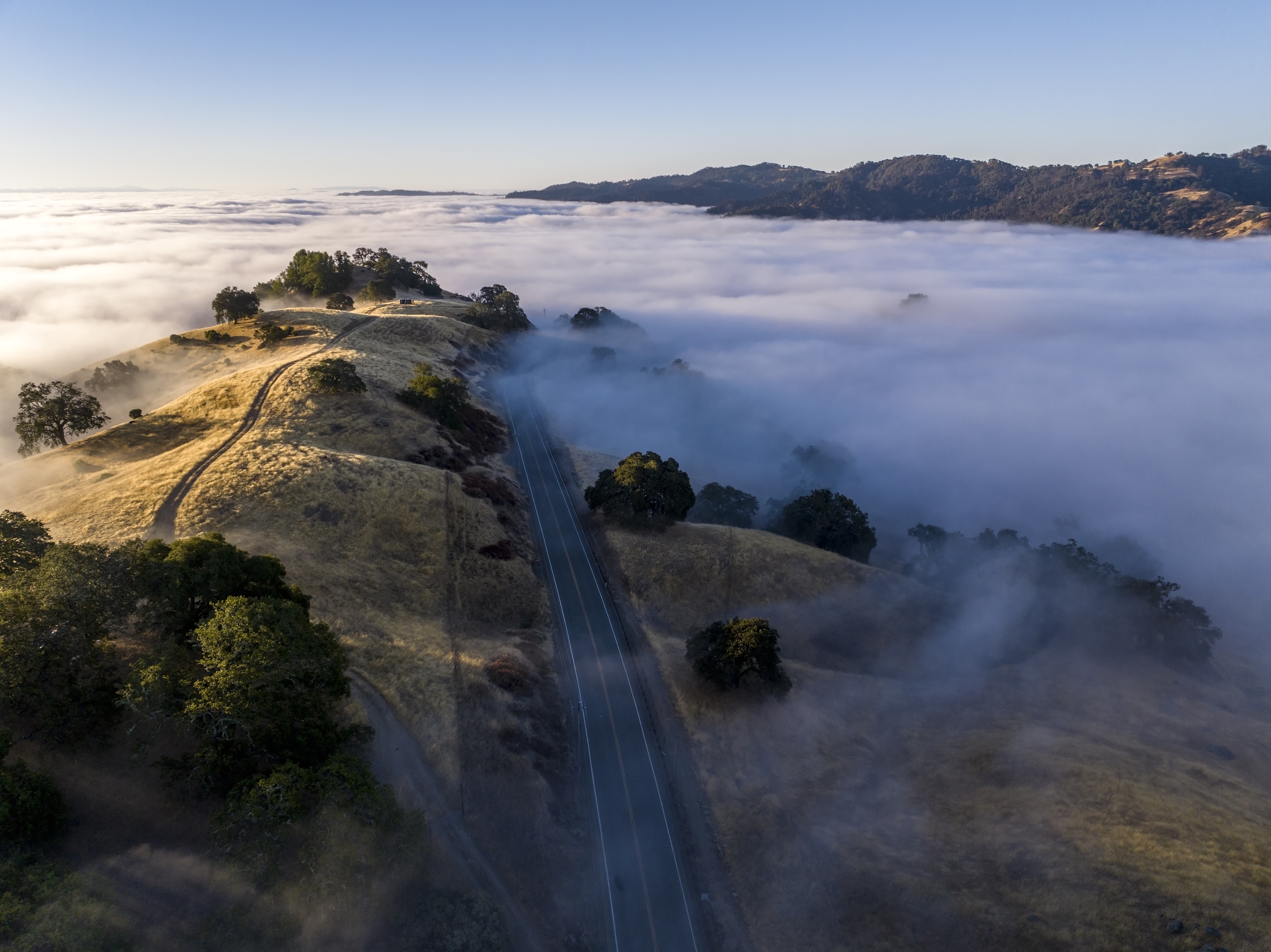
It seems, in addition to the collegial relations between Sonoma County entities, the area is beneficial to winemakers for an undeniable fact: as properties in Napa that have soil adequate for red varietals have, largely, all been purchased and farmed, Sonoma is more open. That, and the climate has changed—and winemakers across Napa have begun to adapt defensive growing techniques (think: solar shades and sprinkler system updates), but Sonoma’s proximity to the cooling winds of the Pacific and heterogenous soils next to the Russian River have placed the region at an advantage: at this juncture, Sonoma’s GDD (Growing Degree Days, the days in a calendar year which the climate is agreeable for plant cultivation) is equivalent to that of Napa Valley in the 1970s, and is projected to remain so for the next three decades.
It is science-based, precise factors like these that elevate the winemaking ethos of young changemaker Jesse Katz above his peers. In the past 15 years, Katz has served on winemaking teams at Screaming Eagle, Robert Foley, and Viña Cobos, and founded the critically acclaimed Malbec brand, Devil Proof. In conversation, Katz speaks frequently of “vertical integration” in the winemaking process—and though it’s true Aperture Cellars has purchased vineyards like Farrow Ranch and those within Alexander Valley across the county, allowing for the consolidation of labor from vine to bottle, he’s also referring to the totality of the winemaking process. To Katz, wine does not just emerge from the grape, nor from the vine. To Katz, wine begins, and ends, with the earth, and the job of the winemaker is to become a steward of that land.
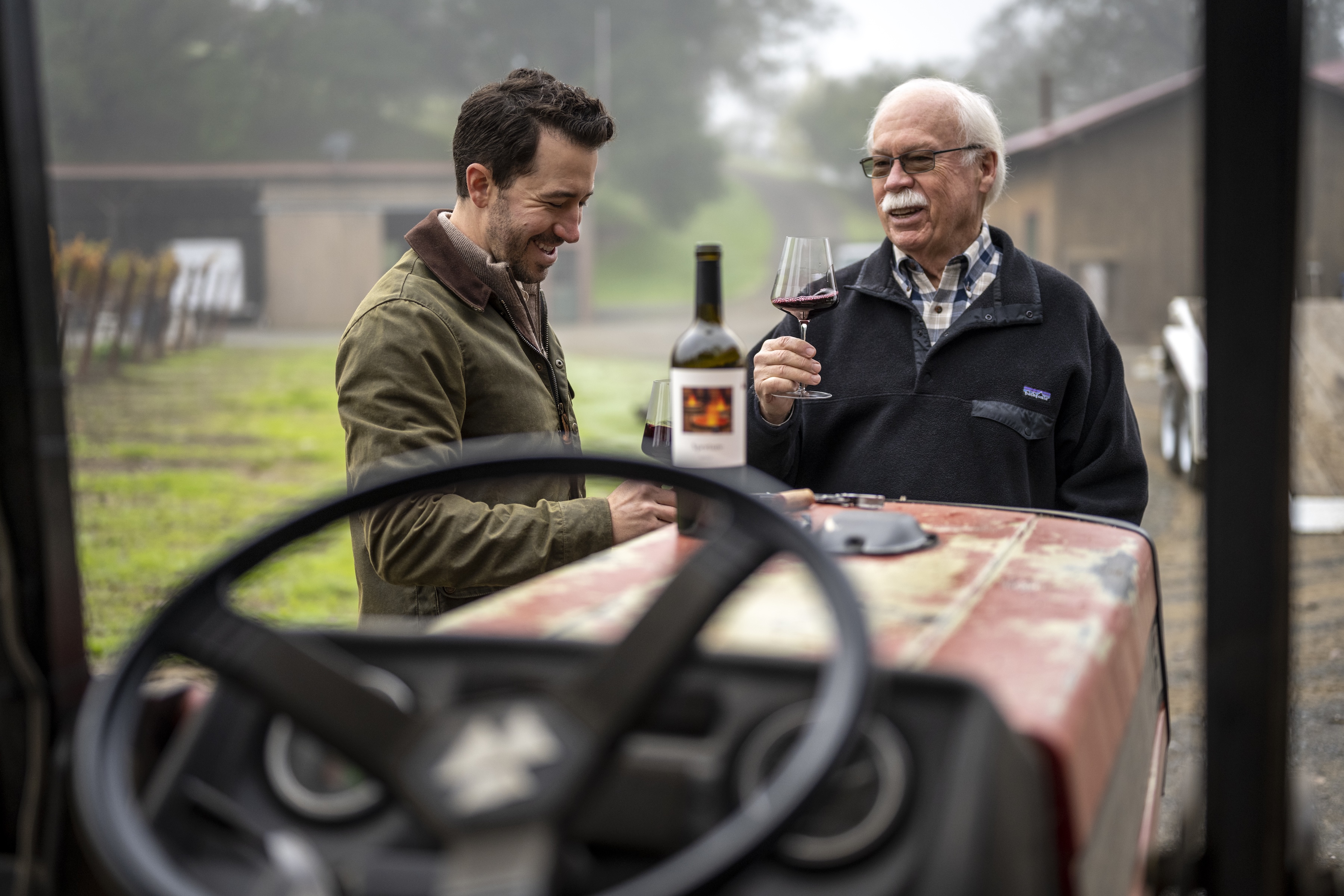
Hence, Aperture’s superstar lineup of Bordeaux-style wines—whether it be the Collage blend series, the Cabernet Sauvignon, or the famous Chenin Blanc, emerges, first, from the Aperture team’s insistence on tending to the vineyards using data-driven, science-based practices to ensure quality at every level. After purchasing the first piece of Aperture property, a sun-soaked pocket by the Russian River in 2016, Katz worked closely with Phil Freese (who, in addition to an expert winegrower, just so happens to be a lauded biochemist and scholar) to ensure that the soil was optimal for growing red Bordeaux varietals—in each of his vineyards, he divvies up varietals into hyperspecific sections, tailoring the location of each varietal for the type of soil optimal for growth, each tiny section relegated to hundreds of square feet.
“Aperture approaches sustainability from the ground up,” says Phil when I speak with him about his collaboration with Jesse. “Every vineyard decision is made with the long view in mind, starting with selecting sites that will thrive for generations, farming in a way that builds soil health and resilience and designing systems that strengthen the land rather than deplete it. It’s a forward-thinking approach to viticulture that reflects a genuine investment in the future of great wine.”
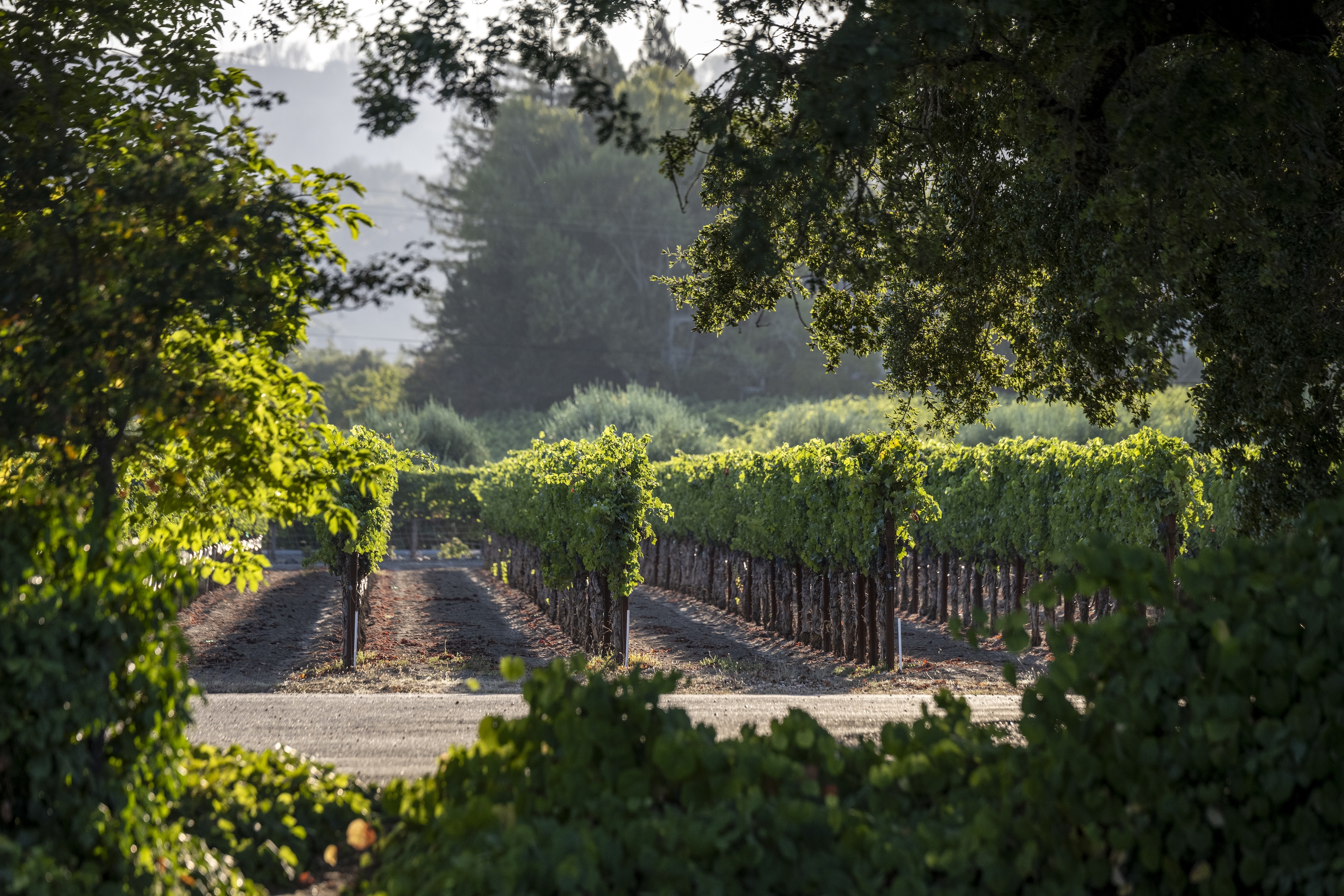
Throughout the growing season, Katz uses NDVI aerial imaging (satellite images taken from above the vineyards, a remote sensing technology Freese developed in partnership with NASA during his tenure at Mondavi during a phylloxera outbreak) to monitor the health of the vine and reduce potential stressors on a vine-by-vine basis, a process which in turn reduces water consumption.
Katz is, truly, serious about conservation—98% of the water used at the Aperture wineries is reclaimed from rainwater, and returned to the vineyard through drip irrigation. Many of the vines at Aperture are dry farmed—that is, no irrigation or watering happens to the vine outside of what already is given to the plants via natural rainfall. It’s a laborious process—one that can yield, at times, a significantly smaller crop, but it’s incredibly rewarding: the resulting fruits are far more complex, and hence give way to a rich, nuanced product. In turn, Aperture consumes far, far less water than other producers, and puts out layered wines. The dry farming process ensures the longevity of vines—verified by the two historic blocks of red varietals from 1912 on the property and still yield enough for Aperture Estate’s acclaimed 1912 Red Blend.
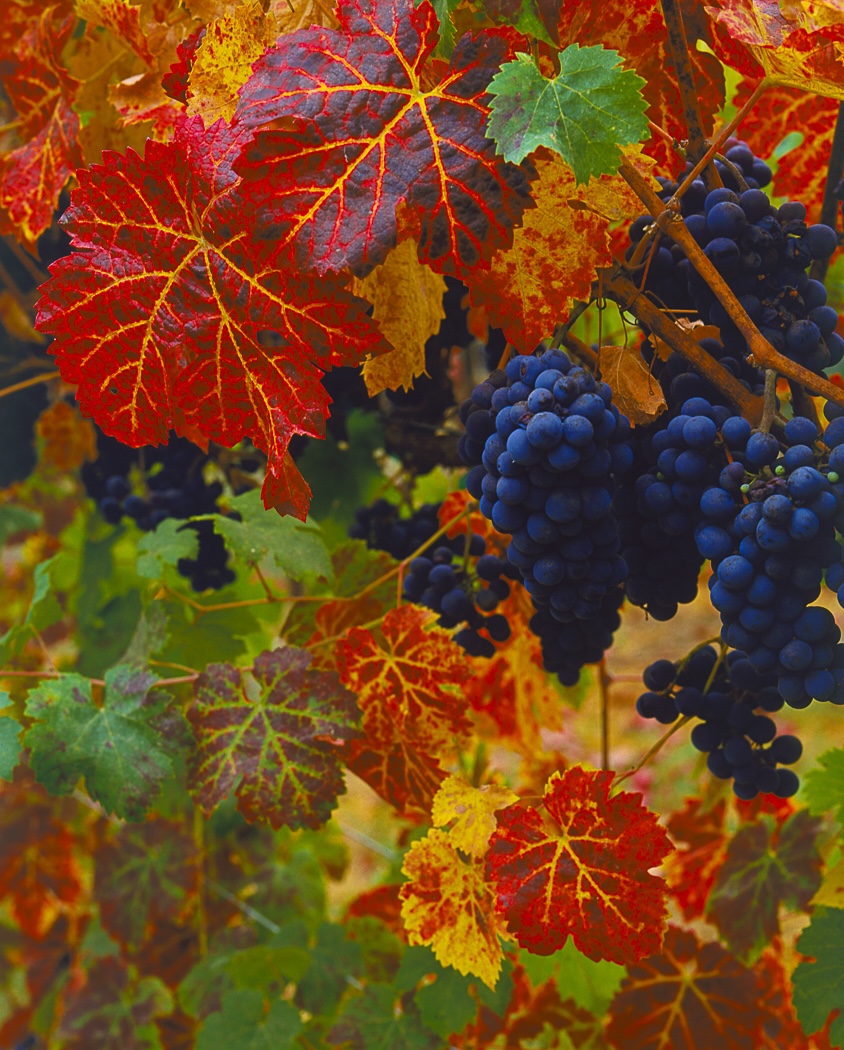
Generally speaking, the extreme (and nearly obsessive) lengths that Katz goes to tend to his vineyards is somewhat of a revolutionary act in the winemaking industry. His practices have even earned him, alongside Marine Layer’s Baron Ziegler and SingleThread’s Kyle Connaughton, the title of “Wine World Maverick.” He’s working all the time. He lives on the Aperture Estate Vineyard alongside his wife and children. He analyzes soil gradients to the tune of hundreds of feet; he frequently checks an app on his phone that connects to NDVI satellite imagery taken of the vineyard, looking to monitor the health of each individual vine.
Even within the process of fermentation, Katz leverages practicality and precision over tradition, using new tech like optical sorting machines (high-speed industrial machines outfitted with cameras and lasers, identifying and processing faulty berries at scale, processing around 7 tons per hour in vast comparison to the hand-sorted processing of the past) and automatic pump over machines. The automatic pumpover, a relatively new technology yet to be adapted en masse across the industry, offers an efficient alternative to the manual pumpovers of the past—these machines circulate fermenting juice over the cap of grape skins automatically via a machine programmed to sense the mixture as opposed to the alternative, which required laborers to physically hand pump the mixtures at specific times in the fermentation process. This process ensures consistency in texture and flavor across batches.
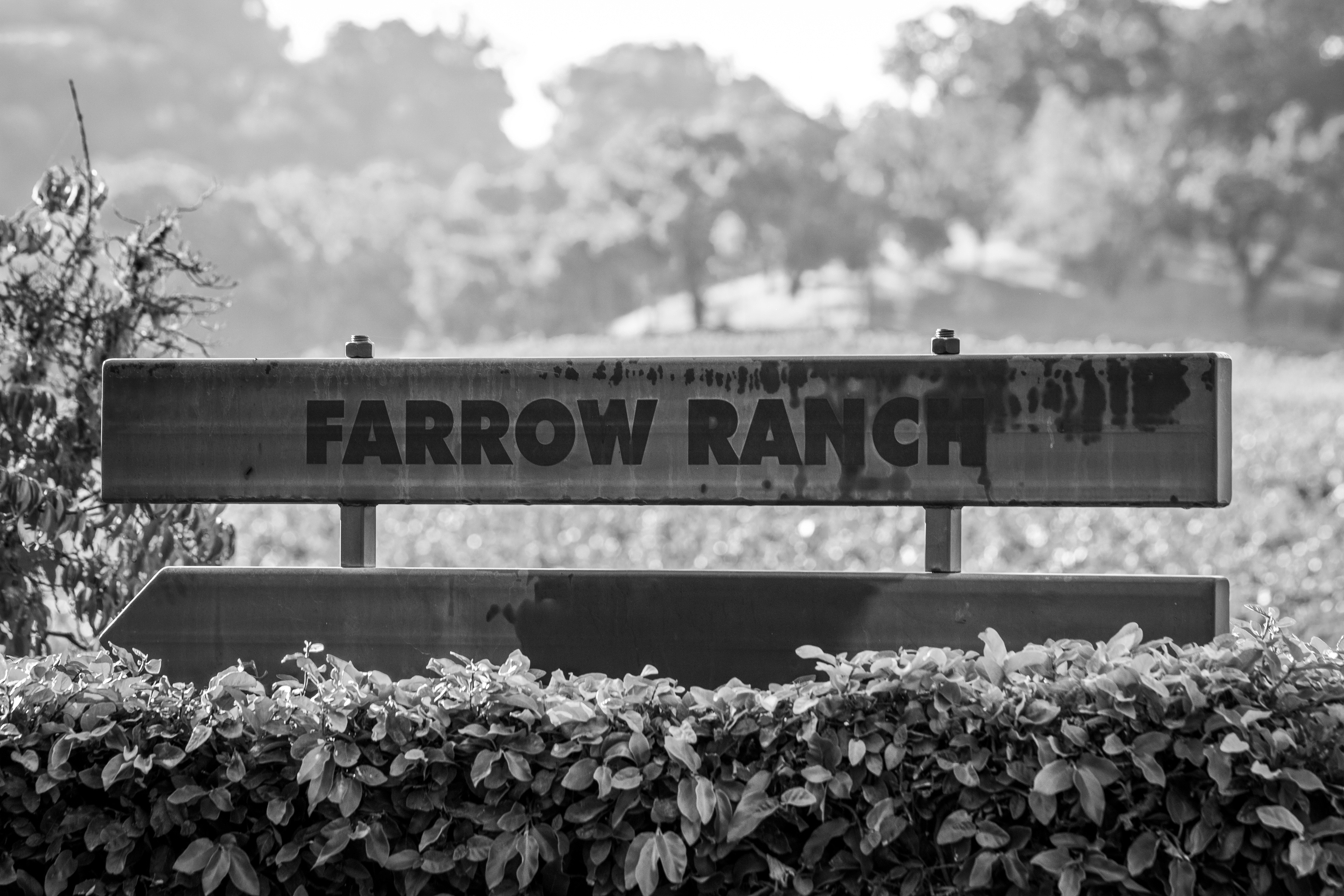
A week spent on the Aperture vineyards, or within the Aperture Estate at the Russian River, is not for someone looking to be told what to think, or how to process wines—this is no elementary vineyard visit. In fact, both Freese and Katz chuckle when asked what the wine actually tastes like, eschewing the conventions of the tourist-heavy economy upon which much of wine country has been constructed. “Everyone tastes differently,” Katz laughs one afternoon when asked about the notes in the Chenin Blanc. “You tell me what you taste. It’s probably right.” There is no need to tell people the wine is good—Katz knows it’s good. He’s certain about it.
And it is excellent. Aperture’s 2021 Farrow Ranch Cabernet Sauvignon was the first perfect 100-point Cabernet created in Alexander Valley history. In fact, nearly all of the wines put out by the winery (and by Katz) have between 94-100 point scores—since 2013, Katz has garnered 39 perfect 100s for wines on which he’s worked. Aperture and Devil Proof have earned 29 perfect 100s. Year by year, bottle after bottle, Katz’s methods, developed under the guidance of Freese, yield excellence. It should come as no surprise that Katz helped create and vend the most expensive bottle of wine ever sold, or that he crafted Justin Timberlake and Jessica Biel’s wedding wine, or that Aperture is now sold as the choice wine for business class on all United Polaris flights.
What makes a brand modern? What makes a product worth believing in? This is a question that surfaces frequently in the time of climate change, in a time where conspicuous consumption— particularly in the realm of food and drink—is less aspirational than it's ever been. But Aperture Cellars is easy to believe in. Out of Katz’s own mouth: “Sustainability isn’t just a program, it’s a way of thinking that shapes how we cultivate our vineyards and craft our wines but also about the future of wine growing,” he says. “Every vineyard we plant and every choice we make is about pushing the limits and finding the best pockets on this earth that are leaving the land stronger than we found it, so the next generation can keep creating something extraordinary… now and for generations to come.”

And so we return, under the harvest moon, to this dream—that of a man and his intimate and unknowable connection to his land, that of a farmer emerging in the middle of the night on his porch, smelling the humidity in the air, sweeping his hand to the glowing moon and proclaiming: “This will be the day of the harvest.” After spending the weekend in Sonoma, and all the deliberateness and care that goes into the product, I don’t want any old farmer on any old moon. I want my winegrower to be sure of himself. I want my winegrower to be Jesse Katz.